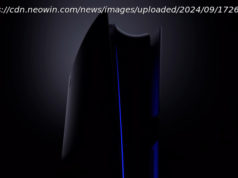You may have heard some buzz recently about time-of-flight cameras, which have started to pop up in some smartphones. But just what is a Time of Flight camera? We asked an expert at Corning to find out how these sensors work and what fresh possibilities they bring to our phones.
The race to improve and differentiate smartphones has been focusing more and more on the camera suite and all that it offers. There’s a good chance that you’ve heard the recent buzz surrounding time-of-flight cameras, as manufacturers are starting to put them into phones. But what exactly is it?
Time-of-flight (ToF) cameras are comprised of a sensor that uses a tiny laser to fire out infrared light. This light bounces off anything or anyone in front of the camera and back into the sensor. The length of time the light takes to bounce back is measured and that translates to distance information that can be used to create a depth map.
“Time-of-flight cameras are actually measuring the time it takes for light to go from the camera to the user or environment and be reflected back to the sensor,” Dr. Xavier Lafosse, commercial technology director of Corning Precision Glass Solutions, told Digital Trends.
Up until now, most phones have relied on stereovision, which employed two cameras to calculate rough depth, but this method doesn’t work in low light or in the dark and it’s not very accurate.
A better method that also employs infrared is structured light illumination where a dot pattern is projected onto a scene or face and the sensor measures the distance between the dots and looks at the distortion in the pattern to calculate depth. This technology works well in the short range, up to arm’s length, for things like facial recognition, which is why Apple employed it with its TrueDepth Camera for Face ID.
Time of flight works in a similar way, but it doesn’t use a pattern of dots. Because these methods rely on infrared light, they work well in low light and even dark environments. The time-of-flight camera illuminates the scene with a homogenous flood of light and the camera looks at every individual pixel in the image.
Home
United States
USA — software The newest phones use a time-of-flight camera, but what is it? We...






